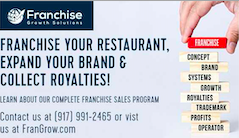Small businesses pay an average of $450 in bank fees every year. To big banks, that’s nothing. But for small businesses, those fees could make the difference between hiring employees, paying bills and even continuing to operate.
How tech companies are stepping up to serve small businesses
With Permission from Brandpoint
(BPT) – Small businesses are woefully underserved by traditional financial institutions. In fact, a J.D. Power 2018 U.S. Small Business Banking Satisfaction Study found that nearly 63% of microentrepreneurs believe their bank does not appreciate their business — and only 32% think their bank even understands what they do.
Businesses with fewer than five employees make up a staggering 92% of U.S. businesses, yet smaller businesses (and especially service-based businesses) don’t get the same level of attention as bigger businesses when it comes to fintech. Big banks instead direct their investments toward large businesses, where there is potential for greater returns.
Evolving financial software for the modern entrepreneur
Most entrepreneurs went into business because they wanted to follow their dream — only to find administrative and managerial tasks, like bookkeeping, payroll and tax filing, getting in the way of that dream. Fintech software can assist small-business owners in this regard — particularly helpful as many small businesses continue to struggle during the global coronavirus pandemic.
Wave, for example, offers an all-in-one money management solution which helps entrepreneurs remove the pain points of running the financial side of their business and was developed specifically using language, workflows and features a small-business owner with no accounting or finance experience can easily understand.
Fintech solutions can also help small-business owners:
* Track income and expenses
* Understand their profitability
* Be prepared for tax time
Transitioning from an outdated way of small-business banking
Traditional banks are expensive, archaic and offer little more than a safer place to store money than under your mattress. The needs of small businesses are changing, but the response from traditional banks is not. This is especially true for service-based businesses, which make up the vast majority of microbusinesses.
Small businesses pay an average of $450 in bank fees every year. To big banks, that’s nothing. But for small businesses, those fees could make the difference between hiring employees, paying bills and even continuing to operate.
Fintech companies are beginning to understand that small businesses need tailored solutions.
Microentrepreneurs now have banking options, like Wave Money, which does not require a minimum account balance, has no monthly fees and offers fast access to funds, which can help improve cash flow.
Sustaining small-business success after the pandemic
It’s not easy to start a business. From dealing with government policy to navigating bookkeeping, payroll and tax, many of the steps to becoming an entrepreneur are daunting.
Entrepreneurs need all the support they can get, especially since the pandemic has taken a toll on so many. As such, it’s even more important for entrepreneurs to look for solutions that deliver on their unique needs.
Tech companies continue to evolve their products and services to accommodate these challenges and opportunities for small businesses, and as many begin to bounce back from the effects of the pandemic, entrepreneurs should consider financial tech solutions that include:
* Powerful invoicing software that allows you to send out professional invoices, track payments, and automatically send friendly reminders to your customers who don’t pay on time.
* An integrated payments option, so customers can pay electronically with one click of a button. Wave has found that business owners who accept payments electronically get paid on average three times faster than those who don’t.
* A no-fee business bank account. Solutions like Wave Money, a no-fee small business bank account, not only speed up access to funds, but also automate bookkeeping and create records ready for tax time, so business owners can spend less time worrying about back-office tasks, and more time running their business.
Starting a business is never easy, but the right fintech software can help manage your business’ financial life in meaningful ways. That way you’re ready when tax time approaches — and you can continue focusing on growing the business you love.














